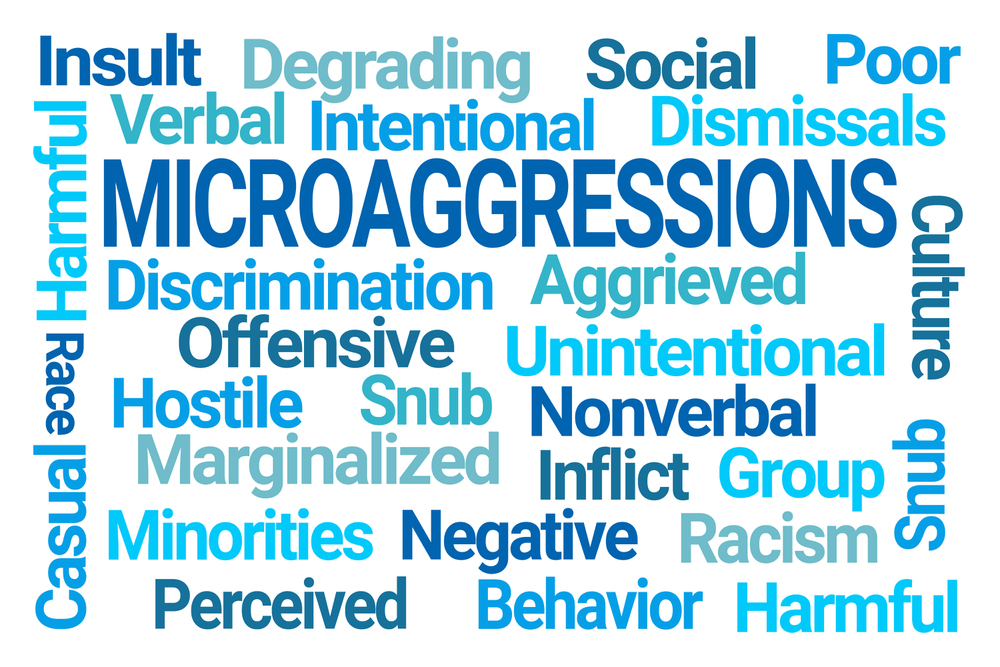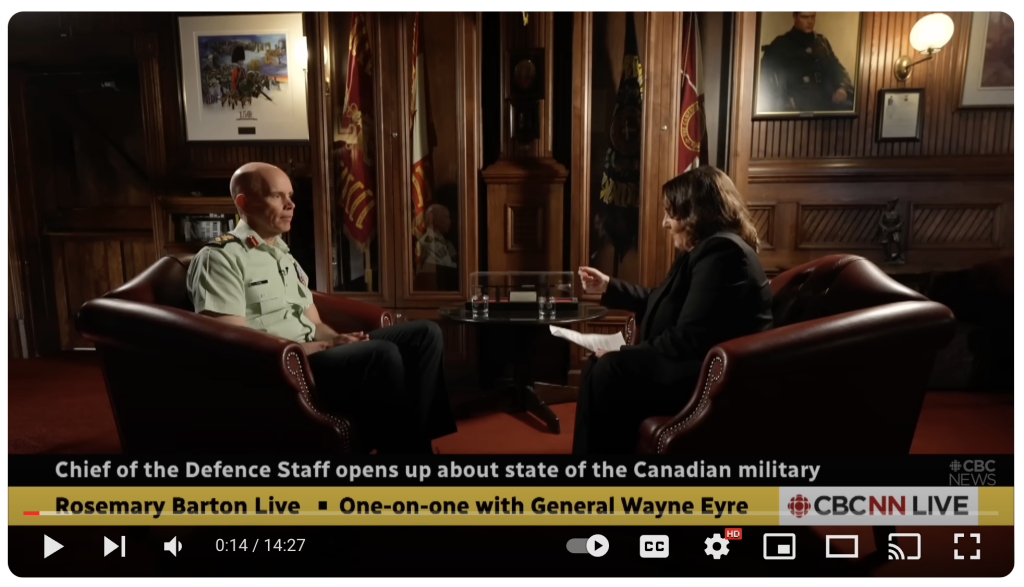By now, you’re probably familiar with the term “microaggressions,” those subtle yet hurtful digs or assumptions directed at members of traditionally marginalized groups. They creep into some of our daily interactions, regardless of our background or job level, leaving a lasting negative impact.
 While I’ve often touched upon microaggressions in my blog posts and social media content, I’ve never dedicated an entire post to this crucial topic—until now.
While I’ve often touched upon microaggressions in my blog posts and social media content, I’ve never dedicated an entire post to this crucial topic—until now.
Research confirms what many of us have experienced or seen firsthand: these seemingly innocuous comments can have profound effects on our physical and mental well-being. From depression to chronic stress and even physical ailments like headaches or high blood pressure, the toll of microaggressions on their target is undeniable.
In this post, I’ll delve deeper into the world of microaggressions—unveiling their subtleties, understanding their impact, and exploring strategies for navigating and combatting them.
It’s time to shed light on these often overlooked and insidious aspects of discrimination.
Recognizing Microaggressions
Often subtle and sometimes unintentional, these brief encounters convey messages of exclusion or inferiority, creating a hostile environment for those on the receiving end.
 Imagine being a female leader in a male-dominated corporate setting. Despite your seniority and expertise, you find yourself routinely mistaken for someone more junior. Your authority is constantly undermined as your judgment is publicly questioned in meetings, creating a hostile environment where your contributions are undervalued and dismissed.
Imagine being a female leader in a male-dominated corporate setting. Despite your seniority and expertise, you find yourself routinely mistaken for someone more junior. Your authority is constantly undermined as your judgment is publicly questioned in meetings, creating a hostile environment where your contributions are undervalued and dismissed.
Picture being consistently mistaken for another person of the same race or gender, reducing your individual identity to a stereotype and the assumption that everyone in your group looks similar. Likewise, maybe you’re assumed to hold certain beliefs or preferences based on your gender, sexual orientation, sexual identity, ethnicity, disability status, religion, or skin colour.
Imagine a scenario in which a racialized person in an elite work environment is assumed to be a service staff member rather than a senior leader/professional based on their appearance.
 In each of these situations, remarks chip away at your dignity and self-esteem, leaving you feeling isolated and invalidated in your own workplace or social environment. These instances, while appearing trivial on the surface, can erode confidence, diminish morale, and undermine professional growth.
In each of these situations, remarks chip away at your dignity and self-esteem, leaving you feeling isolated and invalidated in your own workplace or social environment. These instances, while appearing trivial on the surface, can erode confidence, diminish morale, and undermine professional growth.
Despite their subtlety, microaggressions perpetuate a culture of exclusion and marginalization, contributing to a hostile environment for those targeted.
Microaggressions: Real Harm or Hypersensitivity?
Unfortunately, dismissing microaggressions as mere hypersensitivity is (still) all too common in today’s professional and social environments. Many may brush off these instances, claiming that the words or actions aren’t inherently racist or discriminatory. However, this overlooks the insidious nature of microaggressions and their significant impact on individuals’ well-being.
Although a single microaggression might appear innocuous, the cumulative impact of a lifetime of such experiences can profoundly damage a person’s mental health.
 That’s the insidious nature of microaggressions: it lies in their ability to accumulate over time, exacerbating feelings of alienation and reinforcing stereotypes. A belittling remark, an off-handed comment, or even just a questioning glance can chip away at an individual’s sense of belonging and self-worth. Moreover, they can hinder job performance, as individuals may expend energy navigating and protecting themselves from these subtle slights rather than focusing on their work. Over time, some people internalize these oppressive interactions and start to feel less worthy or capable.
That’s the insidious nature of microaggressions: it lies in their ability to accumulate over time, exacerbating feelings of alienation and reinforcing stereotypes. A belittling remark, an off-handed comment, or even just a questioning glance can chip away at an individual’s sense of belonging and self-worth. Moreover, they can hinder job performance, as individuals may expend energy navigating and protecting themselves from these subtle slights rather than focusing on their work. Over time, some people internalize these oppressive interactions and start to feel less worthy or capable.
By trivializing or dismissing microaggressions, we deny and ignore the lived experiences of those who endure them daily. I would argue that dismissing the impact of microaggressions is in fact a microaggression.
It’s essential to recognize that the harm caused by microaggressions is real and valid, regardless of intent. Ignoring or downplaying their effects perpetuates a culture of invalidation and further marginalizes those affected. Instead, it’s essential to listen, validate, and actively work towards creating environments where all people are respected and valued – and mistreatment is not tolerated.
Addressing Workplace Microaggressions from the Top Down
Leadership plays a crucial role in navigating microaggressions within organizations. As the driving force behind workplace culture, leaders have a responsibility to set the tone for a respectful and inclusive environment. This begins with fostering awareness and understanding of microaggressions among all employees. Given the harm created by environments where employees experience chronic mistreatment, this should be seen as a health and safety issue.
 Leaders must educate themselves and their teams about the subtle forms of discrimination that can occur and the impact they have on people. Furthermore, leaders should model appropriate behaviour by actively challenging microaggressions when they occur and demonstrating empathy and support for those affected. Creating a culture where open dialogue is encouraged and where individuals feel empowered to call out and address microaggressions is crucial.
Leaders must educate themselves and their teams about the subtle forms of discrimination that can occur and the impact they have on people. Furthermore, leaders should model appropriate behaviour by actively challenging microaggressions when they occur and demonstrating empathy and support for those affected. Creating a culture where open dialogue is encouraged and where individuals feel empowered to call out and address microaggressions is crucial.
Leaders can implement policies and procedures that explicitly prohibit and address microaggressions, providing avenues for reporting and resolving incidents. Investing in modern leadership development programs, like those used at Canada’s Department of National Defence and Employment and Social Development Canada, that focus on diversity, equity, and inclusion can empower leaders with the skills and knowledge necessary to effectively address and discourage microaggressions in the workplace. Equally important, leaders can develop leadership styles that are consistent with healthy workplace cultures, which promote psychological safety.
Providing education and training on anti-racism and the trauma caused by various forms of discrimination and mistreatment can help mitigate these behaviours and promote a more respectful and supportive work environment. The simple truth is that most workplaces still have room for improvement and systemic changes.
How Microaggressions and Related Behaviours Can Hurt the Majority
During past training sessions, I’ve provided empirical and concrete examples of how discrimination can hurt more than the intended victims. Here, I’ll share one clear example, inspired by a recent TV interview, of how microaggressions and chronic mistreatment can impair retention and hurt the majority.
 Many Canadians are familiar with the problems associated with cases of sexual misconduct, hostility toward members of the 2SLGBTQ+ community, and racial discrimination within our Canadian Armed Forces (CAF).
Many Canadians are familiar with the problems associated with cases of sexual misconduct, hostility toward members of the 2SLGBTQ+ community, and racial discrimination within our Canadian Armed Forces (CAF).
So, it is not surprising that there are at least 16,500 vacant (regular and reserve) positions, as reported in this CBC News interview with General Wayne Eyre, Chief of Defence Staff, as he approached retirement. As noted during the interview, 23 percent of our country is foreign-born, and the military wants “to leverage that pool of talent if we’re [i.e., the CAF] going to survive into the future.” People concerned about avoiding sexual mistreatment or racial discrimination seem to be shying away from the military – and this creates problems for the majority if we are unable to protect our northern frontier as climate change impacts that region and makes it more vulnerable to bad actors. It’s worth acknowledging that other organizations face similar challenges even if their situations have not been discussed or reported publicly, and the implications are less dramatic.
To be fair, these problems are not unique to the Canadian military since racialized, and 2SLGBTQ+ military members in the US and countless other organizations have faced ongoing challenges. And again, to be fair, the Canadian military has been taking serious actions to improve its corporate culture and leadership. Like in many organizations, what is acceptable in the military has evolved, especially in the past 10 years or so.
Did this article spark any career-related questions, plans or concerns?
Reach out today for a free and confidential initial consultation by phone, email, or via direct message on X/Twitter, Facebook or LinkedIn.
P.S. If you haven’t yet done so, stay in the loop by subscribing to my bi-monthly newsletter. Click here. I promise not to spam, and your email address will always stay private.
If you enjoyed this topic or are interested in ongoing professional and leadership development, you’ll also enjoy reading or listening to How to Be Resilient in Your Career: Facing up to Barriers at Work, my book published in February 2023 by Routledge. It’s available in print, as an eBook, and on Audible.
More than career coaching, it’s career psychology®.
I/O Advisory Services Inc. – Building Resilient Careers and Organizations TM.



